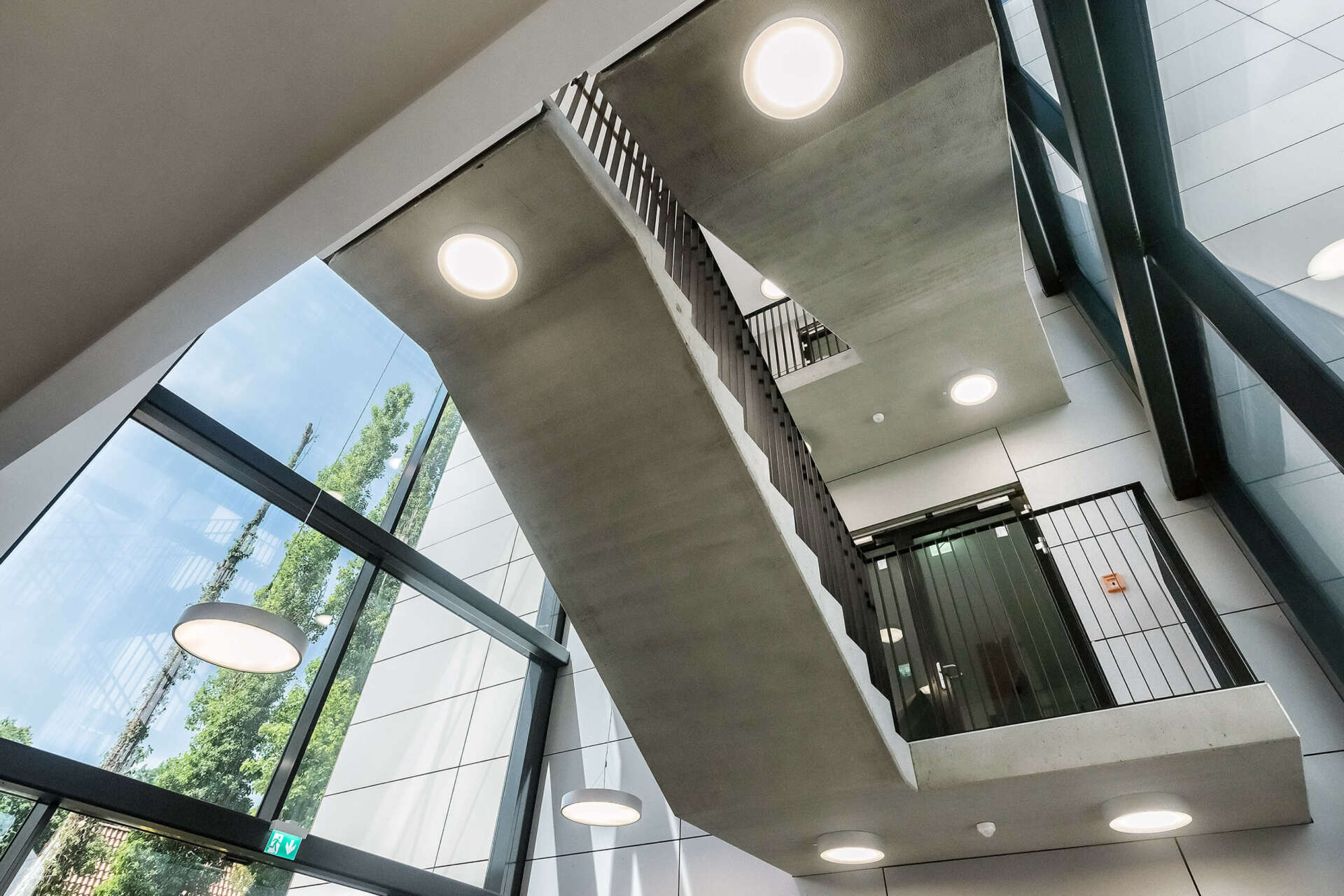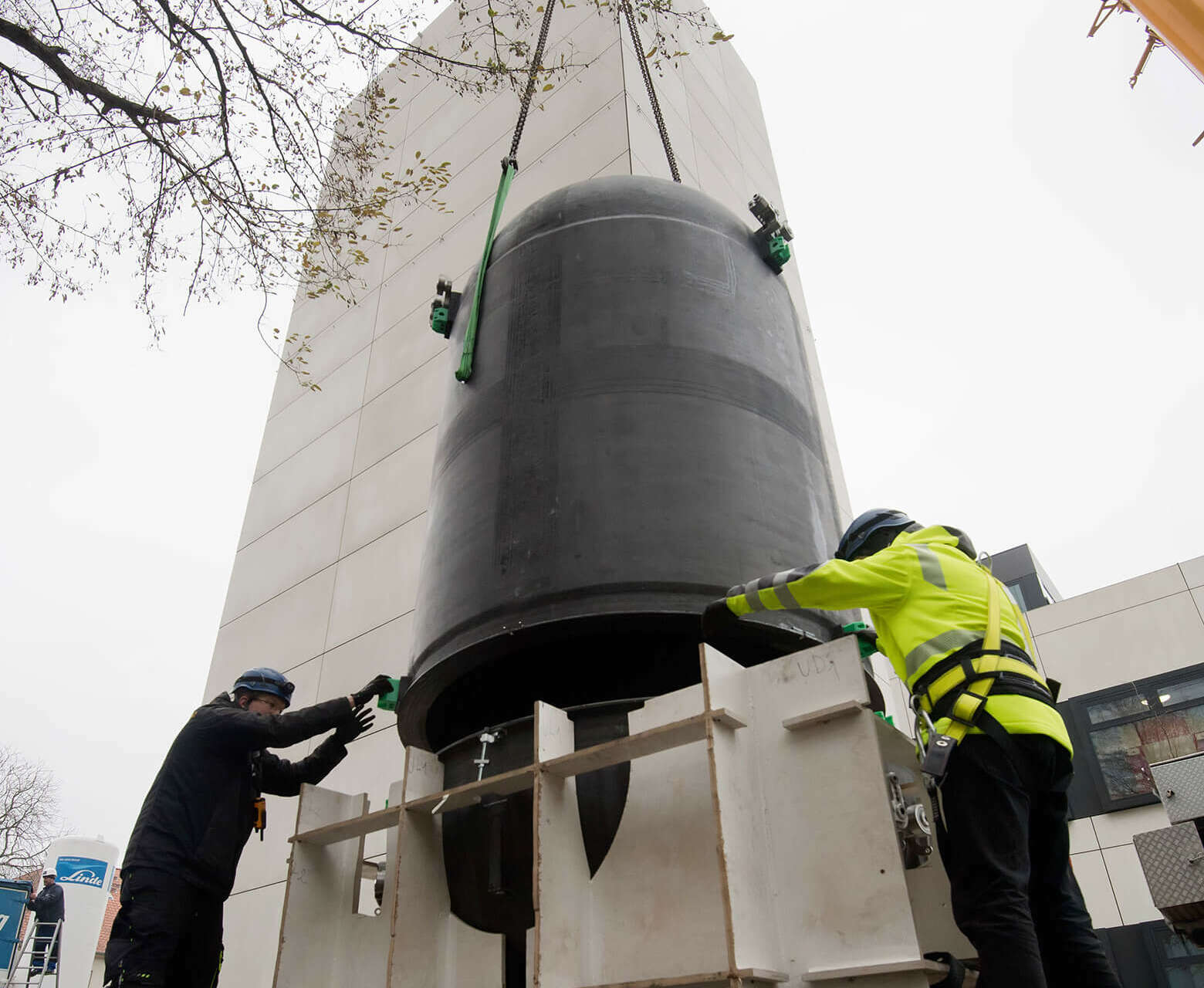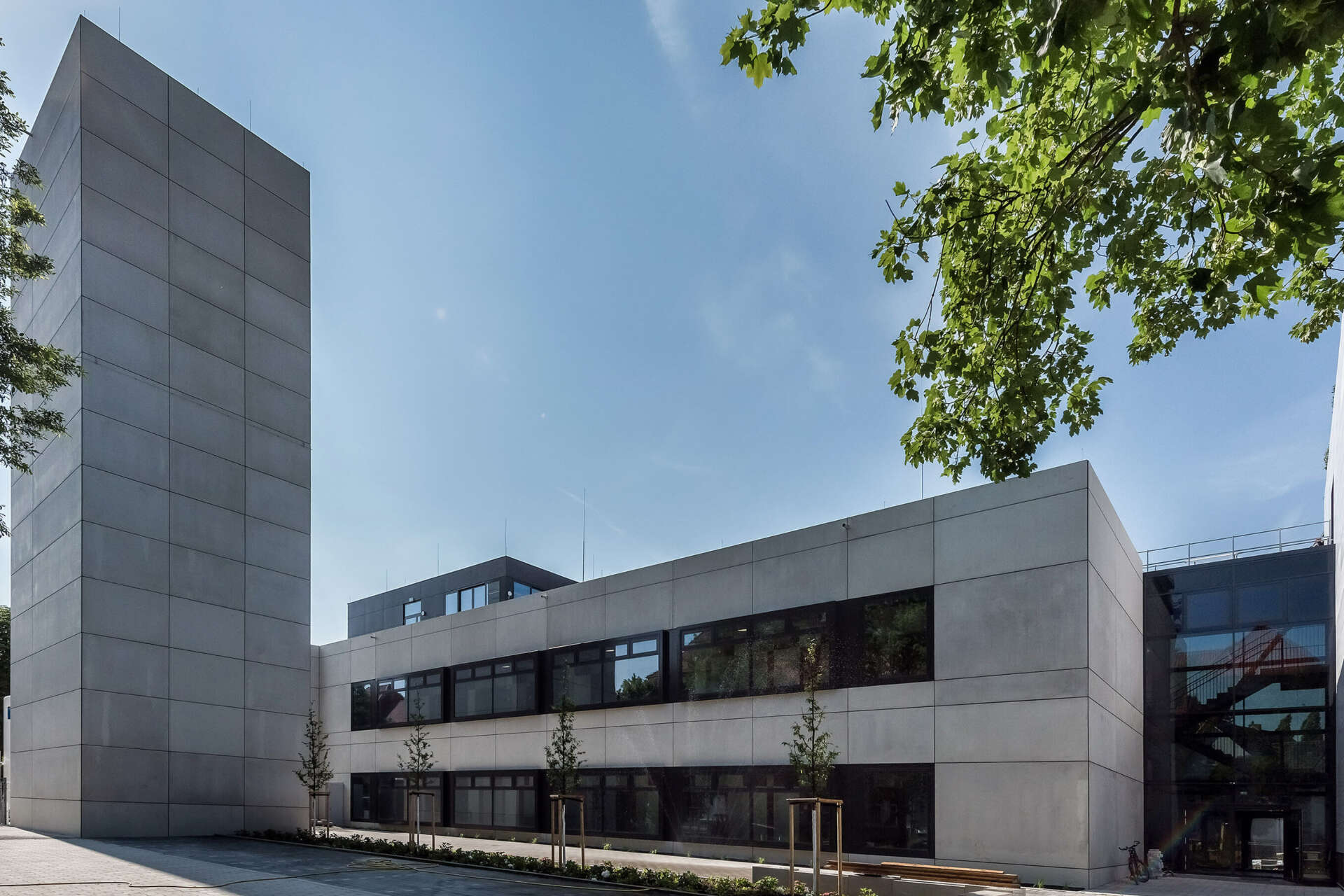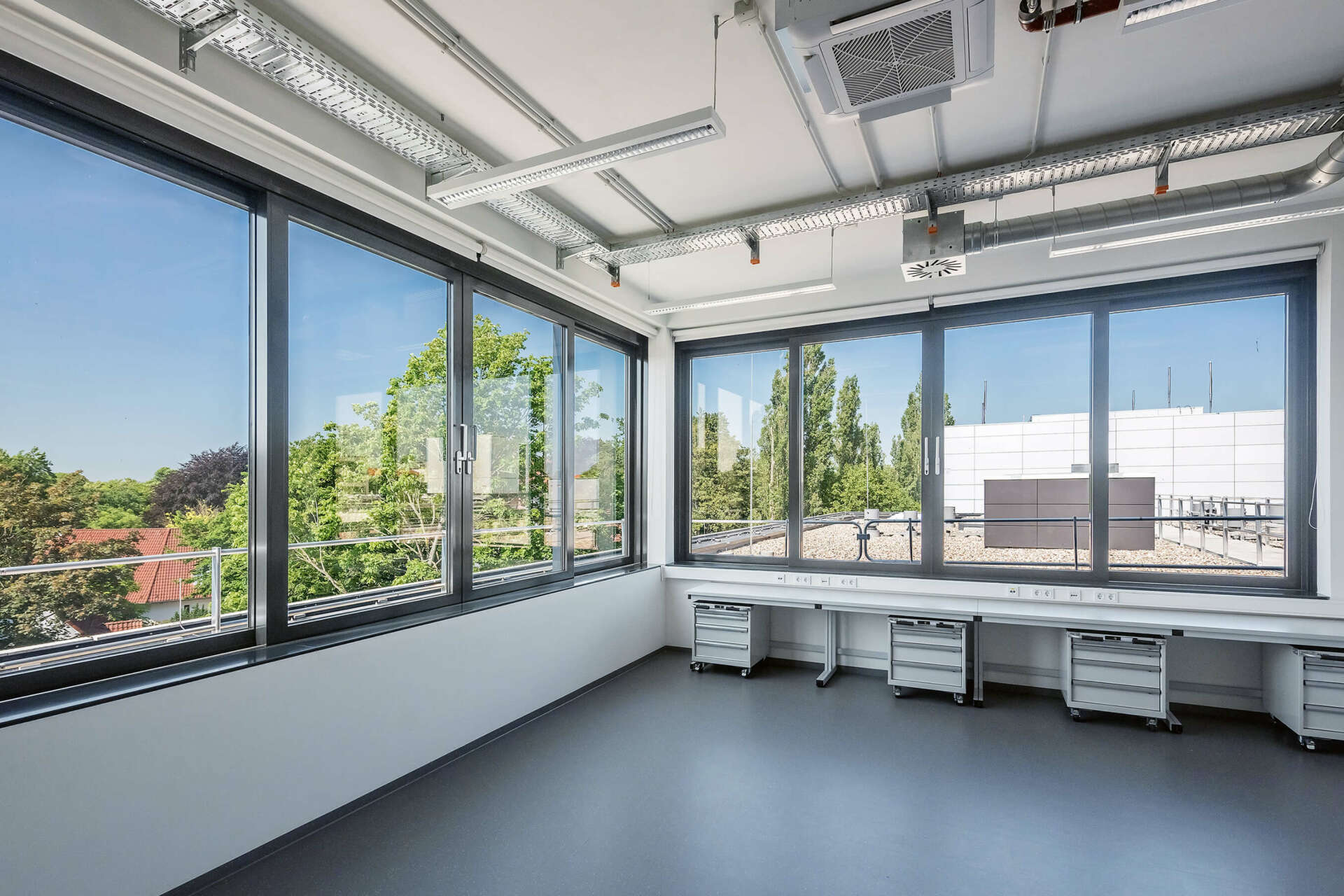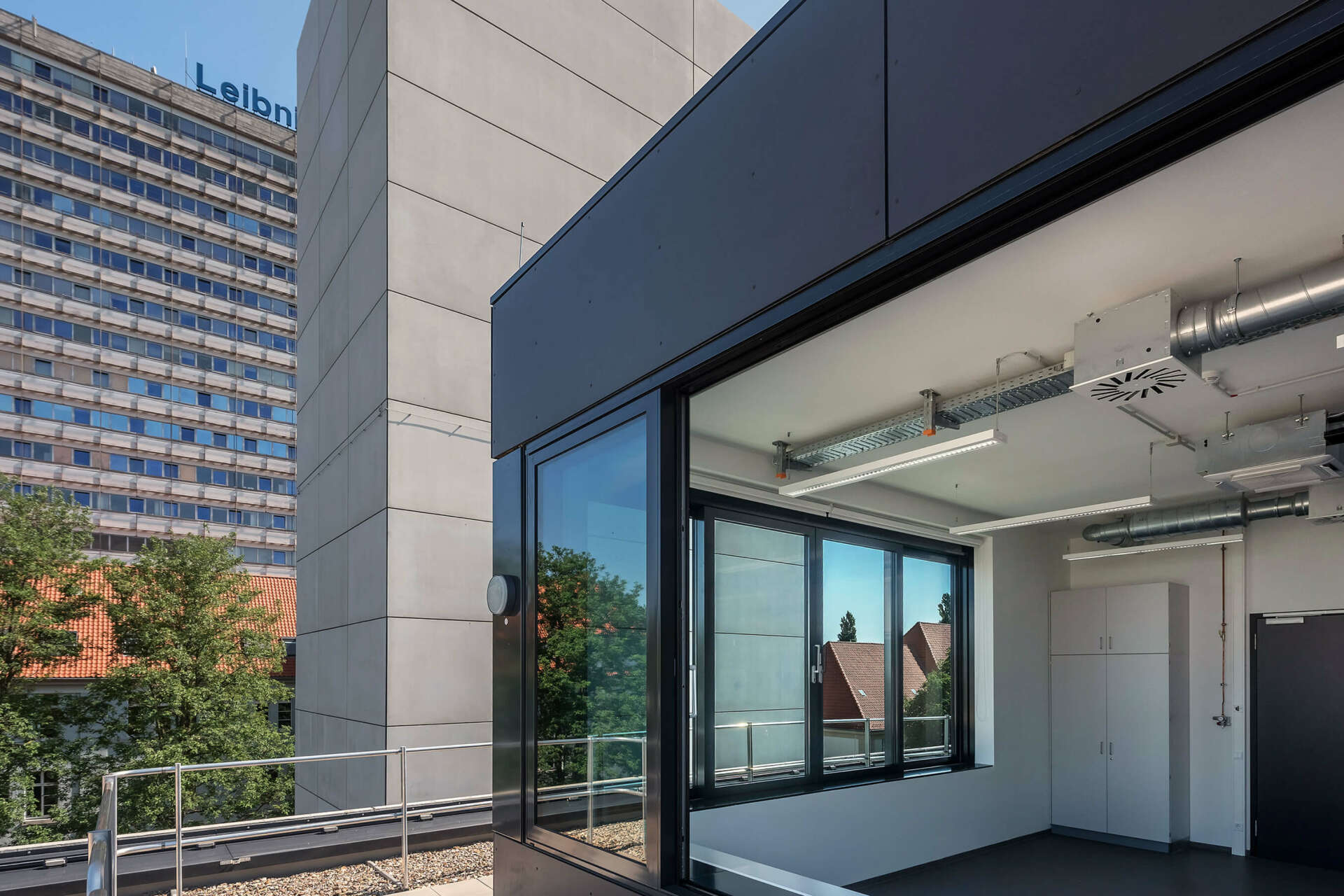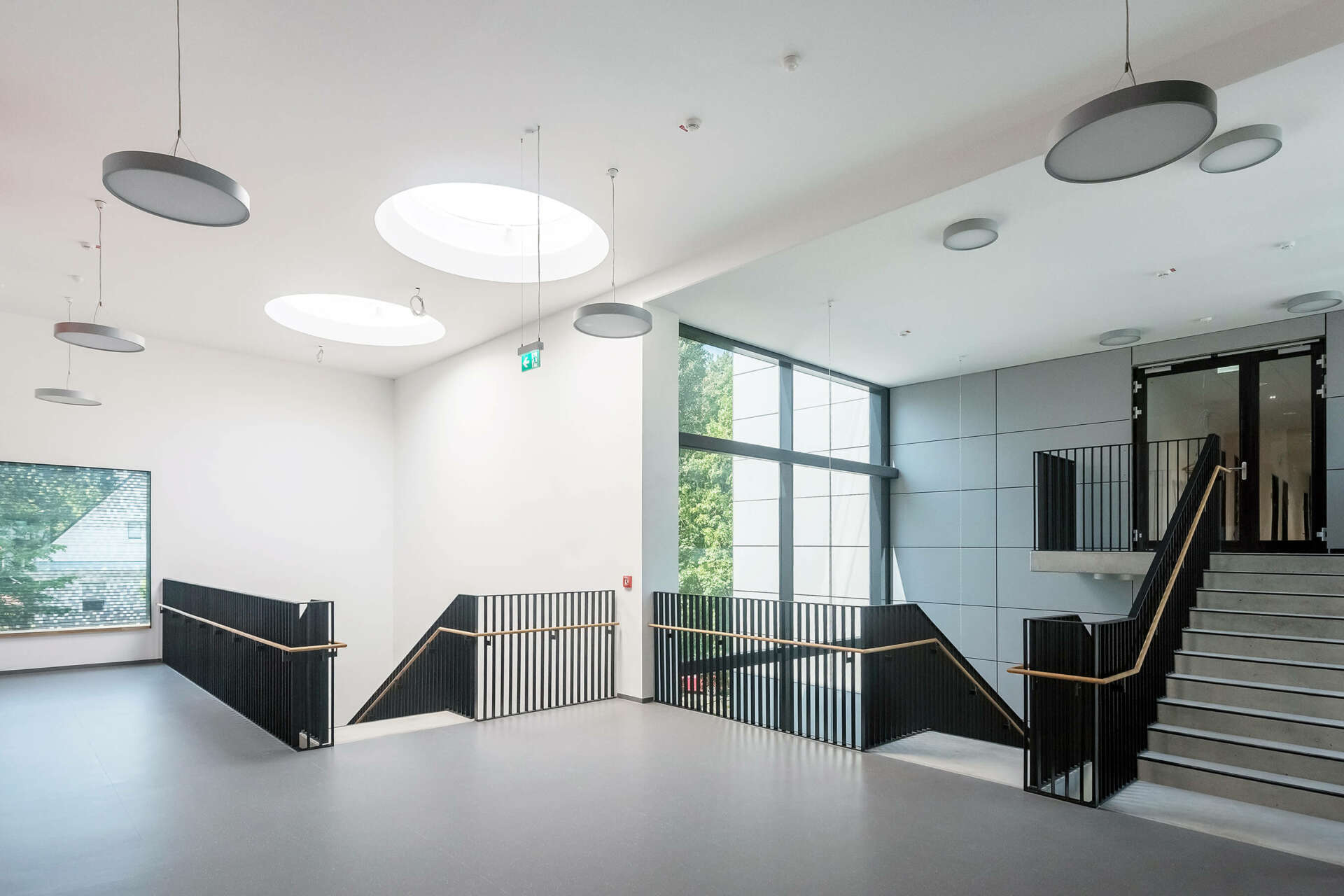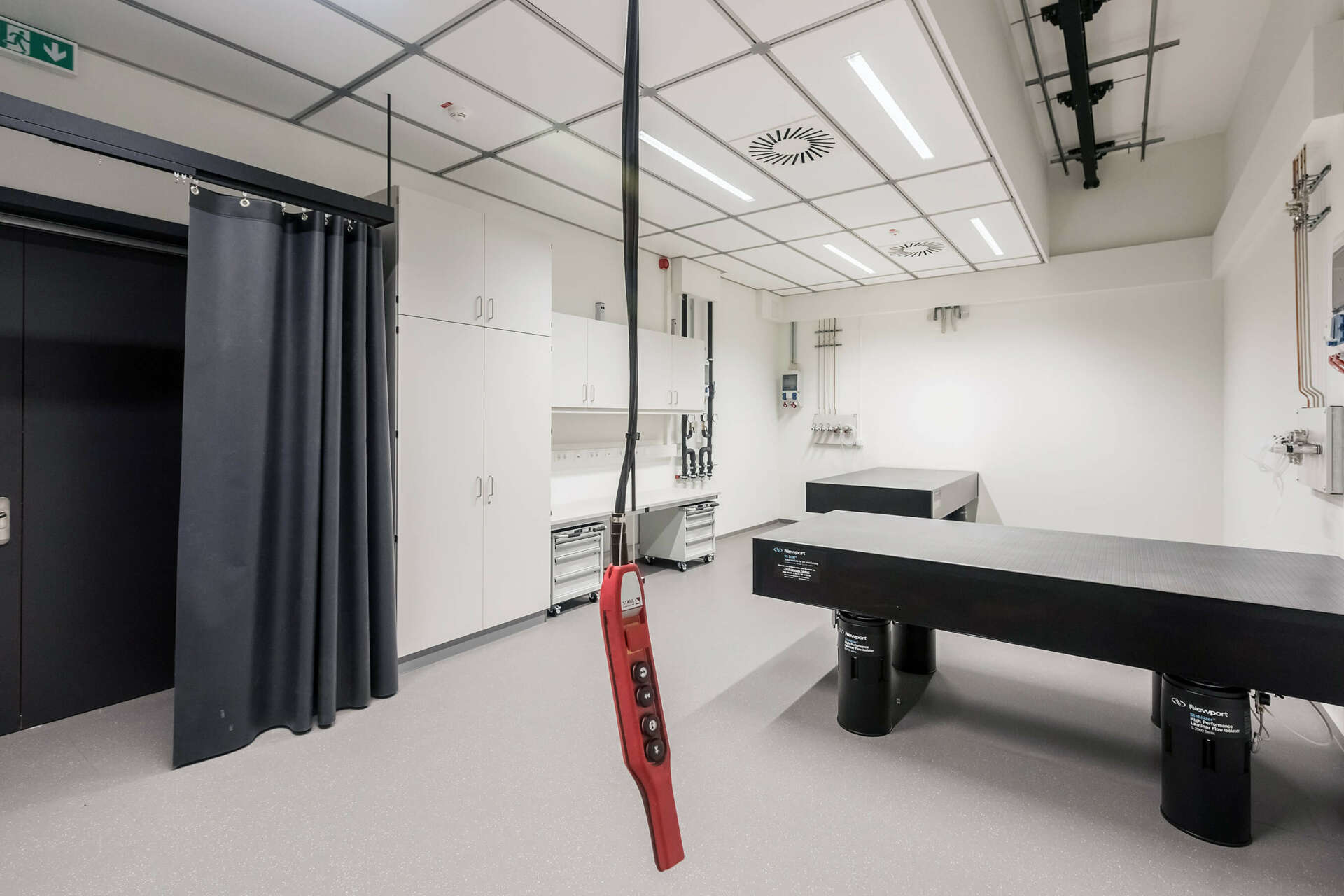Location
Hannover, DE
Services
Architecture
Client
Staatliches Baumanagement
Area
7.612 m² GFA | 35.583 m³ GV
Construction costs
EURO 19.3 million
Project term
August 2012 – May 2018
Competition
1st prize (VOF 2012)
The Hannover Institute of Technology (HITec) at Leibniz Universität Hannover is a unique interdisciplinary research center worldwide. The new building combines three research directions from the fields of physics and geodesy under one roof: quantum technologies, optical technologies and the development and application of quantum sensors. All three research areas fit closely into the core topics of the two clusters of excellence applied for – QuantumFrontiers and PhoenixD.
The new building offers more than 100 scientists a unique infrastructure. In addition to laboratories that are dimensioned for experiments at quantum level precision, three large-scale facilities that are unique in the world will be used. The Einstein elevator – a 40 meter high free-fall simulator – enables experiments in weightlessness for four seconds. The so-called fiber drawing system is used to develop and produce optical fibers, which are used, for example, as space-suited fiber lasers and in fiber-optic applications. And the atomic fountain (Very Large Baseline Atom Interferometer – VLBAI) is used to research and develop high-precision measurement methods based on matter waves.
During the planning phase, the focus was on the consistent separation of the highly sensitive complex optical systems from the numerous interference pulses.
